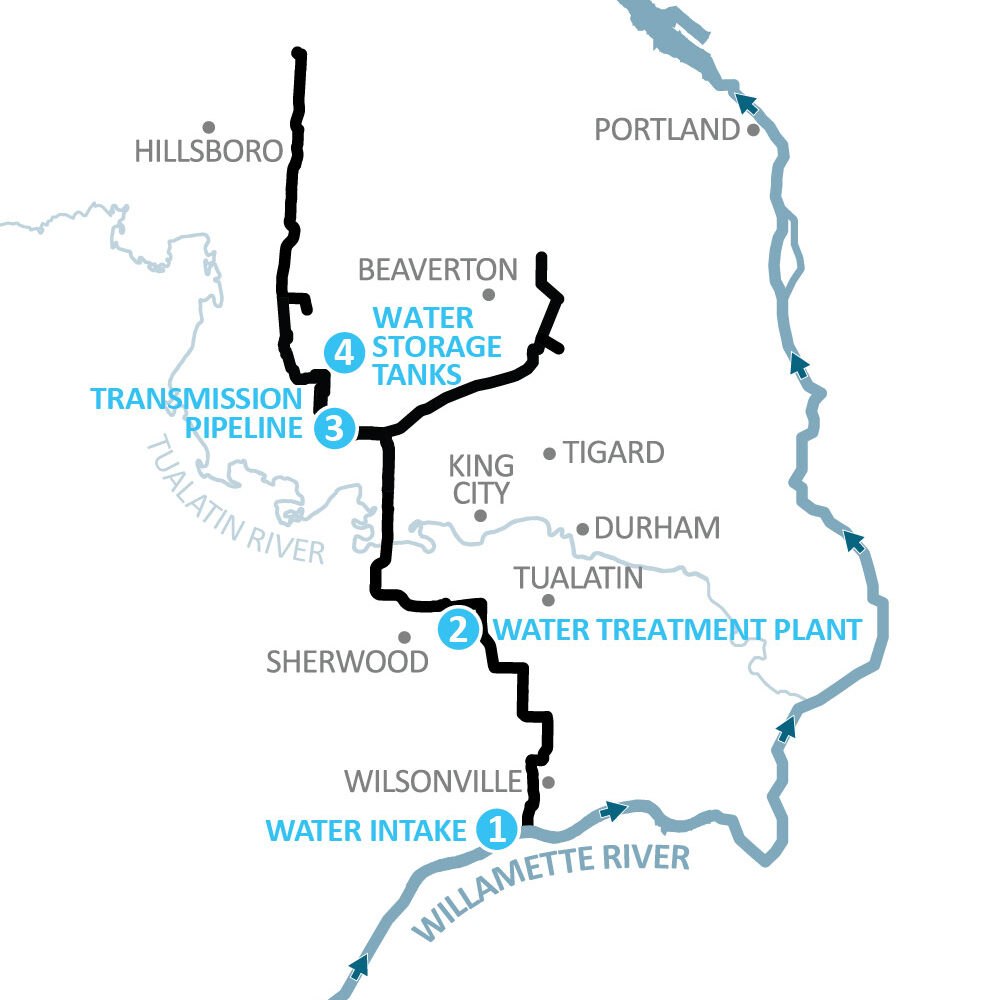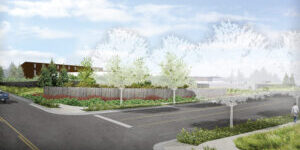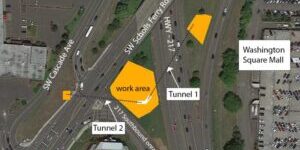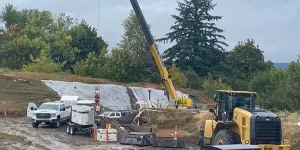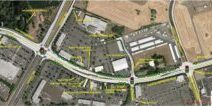
By on August 06, 2016
“When Metro added South Hillsboro to the urban growth area in 2010, its intent was to address the region’s pressing housing needs, said Andy Shaw, Metro Regional Affairs Manager.”
An earth-moving truck rumbled behind Jesse Lovrien as he spoke with a reporter, proof that the largest planned residential development in Oregon history is at last becoming a reality after 15 years of politicking and planning.
“We’re moving about 600,000 yards (of dirt) in our first phase,” said Lovrien, vice president of operations for Newland Communities, the lead developer of Reed’s Crossing. “Moving from high spots to the low spots.”
Reed’s Crossing will be the first development in the much bigger and broader planned residential community known for now as South Hillsboro.
When fully built over the next two decades, South Hillsboro’s 1,400 acres will be home to roughly 20,000 residents. Approximately 8,000 homes of all types – large houses, small houses, townhouses, condominiums and apartments – are planned for the former farmland.
The South Hillsboro Community Plan also calls for 286 acres of new parks and open space, with 15 miles of new, multi-use trails linked to schools that will be built in the community. South Hillsboro – a placeholder name likely to be replaced with something more marketable — also is expected to include a state-of-the-art transportation network to accommodate motor vehicles, bicycles and expanded transit service.
Construction had at one point been scheduled to start in 2014. Stumbling blocks arose. Then construction was slated to start in 2015. Then more stumbling blocks.
Tuesday morning, Hillsboro Mayor Jerry Willey will lead a ground-breaking ceremony at the construction site – a symbolic coda for Willey. Term limits will prevent the mayor, first elected in November 2008, from seeking another four-year term. South Hillsboro has been in the works for Willey’s entire administration to this point.
The development could push Hillsboro past Gresham to become the state’s fourth-largest city. (After Portland, Eugene and Salem.) More importantly to the Metro regional government, it would add a whole lot of housing capacity to the Portland area at a time population continues to surge and home prices are rising fast.
“With all the jobs increasing in the area, the city is desperate to increase housing so people will not commute long distances to their homes,” said Hillsboro planning director Colin Cooper.
Earth moving began July 18 at the northern edge of the site, along Tualatin Valley Highway. The southern edge will roughly be Southwest Rosedale Road with 209th Avenue on the east, 229th on the west. The early work is expected to accommodate $40 million in construction of two, new main arterials: an extension of Cornelius Pass Road into the site, connecting with an east-west arterial linking Southeast Alexander Street on the west and Southwest Blanton Street on the east.
Homes built by Newland Communities – in the project called Reed’s Crossing — will be the first of three major residential construction components.
Lovrien, the Newland vice president, stood in the dusty field on a recent day and rattled off the project’s particulars.
“Approximately 3,800 single family units with an additional 600 to 900 multi-family units and 90 acres of mixed-use with a town center right in the middle of it,” Lovrien said. “We’ll be building amenities to the town center (and) open spaces.”
Reed’s Crossing’s name was inspired by Simeon Reed, the Portland liberal arts college namesake who once owned the property where the development will take place. Reed’s partner in the farm was William Ladd, the former Portland mayor who created Ladd’s Addition in the 1890s. The area where South Hillsboro will be built was once known as Reedville.
The first houses on the 422-acre Reed’s Crossing site, however, are not likely to be built until early- to mid-2018, Lovrien said, even though a website for the property says homes may be available in 2017.
When they are available, development fees to pay for new public infrastructure in the area will average about $52,000 per house, said Jamie Howsley, an attorney at Jordan Ramis representing Pahlisch Homes, one of two other large developers now involved in South Hillsboro.
“We’re building basically a new city the size of Forest Grove,” Howsley said. “It will have new parks, roads, sewers, water. To the extent everything will be new, that stuff will be passed on to the eventual home buyer.”
Pahlisch Homes will be building on 120 acres on the western side of the South Hillsboro site. Developer Joe Hanauer will build on a 189-acre site south of the Newland-led development.
“When I acquired it, I never had any view of developing it by itself,” Hanauer said of the property he’s held since the early 1990s. “I always felt it should be part of a larger master plan.”
Hanauer said he is surprised the length of time it has taken to reach the point of development, though.
“When I acquired this property I always thought it would be a longer-term investment,” he said. “But I didn’t expect it to be 23 to 24 years.”
The development of South Hillsboro comes none too early for Gerard Mildner, Portland State University associate professor of real estate finance, who says the project is desperately needed because of the region’s housing shortage.
“We need to be producing more housing units,” Mildner said. “We’ve been building at about 6,000 a year. We need to build more like 11,000 per year as a four-county region.”
Mildner faulted Metro, the regional government that controls the urban growth boundary, for its role in the housing crunch.
“The Metro Council has been deluded into thinking we can solve the housing for in-migrants with high density housing,” he said. “What they don’t realize is that high density costs money.” Mildner said, for example, the cost per square foot in a five story apartment building is about double that of apartments in a one-story structure.
When Metro added South Hillsboro to the urban growth area in 2010, its intent was to address the region’s pressing housing needs, said Andy Shaw, Metro Regional Affairs Manager.
“It’s taken a little while and Hillsboro has had to contend with some pretty significant infrastructure costs, but we’re excited to see the project take shape,” Shaw said.

